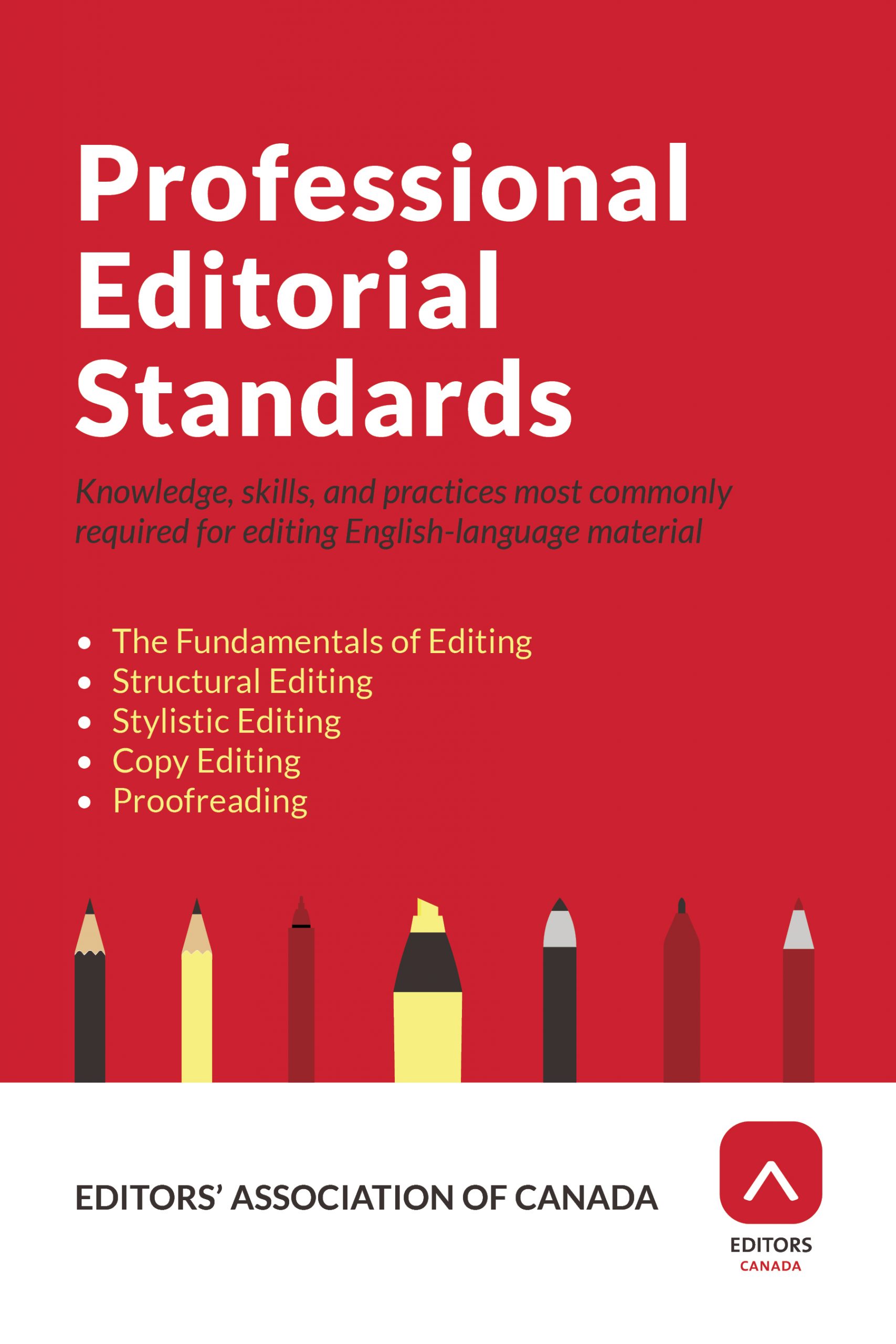
Past, Present and Future — One Editor’s Perspective
This is a three-part series about my thoughts and experiences as they pertain to Editors Canada’s Professional Editorial Standards (PES) and my ongoing work with the Editors Canada standards committee. In Part 1, I’ll give some historical context of PES and discuss my involvement with PES and its importance.
Part 1: The Past
PES was first adopted by Editors Canada membership in 1991. Later iterations were published in 1999, 2009 and 2016. The 2016 version is the current version, and I’m sure you’re thinking, “Wait, it’s 2022 — that’s not very current.” And you’re right! We’re working on it. (If you’d like to get involved, please email me at standards@editors.ca.)
PES is not a very long document — just 16 pages. This tells you something about the hundreds of editors who worked on it. Pruning this material into 16 pages takes extraordinary teamwork, know-how and patience.
My experiences with PES
I’ve become very familiar with PES over the last 10 years or so. It was a document I studied while taking all four Editors Canada professional certification exams. In 2016, I was a volunteer on the task force to revise what was then the 2009 version. We spent the better part of a year reviewing and revising the document in painstaking detail. When we were done, it went to Editors Canada membership for further input before being finalized. It was approved by members in October 2016 and took effect in January 2017.
In 2017, George Brown College (GBC) Continuing Education administrators began a formal review of the Editorial Skills Program because they wanted to better align it with PES. In January 2018, I changed the name of the course I teach — from Substantive Editing to Structural and Stylistic Editing — and the course material to match the PES framework.
More recently, I analyzed the Fundamentals of Editing (Section A of PES) as never before while preparing my four-part webinar series on this topic. Also, since 2020, I’ve been chairing (and for a time, I co-chaired) the outstanding Editors Canada standards committee, which has members from all over the country. Our task is to review and revise PES so that it continues to capture the most important and relevant core editorial principles and practices in Canada as they pertain to professional English-language editors.
The importance of PES
PES is used by educational institutions (like GBC) and employers (such as governments). It helps clarify what exactly professional editors are expected to know and do by delineating the four stages of editing — namely, structural editing, stylistic editing, copy editing and proofreading. It clarifies editorial practices and principles associated with editing at all stages (i.e., the Fundamentals of Editing) and within each stage.
Several Editors Canada committees depend on PES. It directs the content of professional certification examinations, study and certification preparation materials, webinars and more.
How do we make PES even better?
As exemplary as PES is, when a group of editors get together to examine it, undoubtedly questions, gaps and new perspectives will emerge as we look at it through the lens of 2022 and beyond.
In fact, this is precisely why the standards committee was formed at the direction of the national executive council, and why we’re continuing our work today. That’s what I’ll discuss in my next post.
___
Previous post from Berna Ozunal: Letter to Non-Editors
The Editors’ Weekly is the official blog of Editors Canada. Contact us.
Discover more from The Editors' Weekly
Subscribe to get the latest posts sent to your email.
